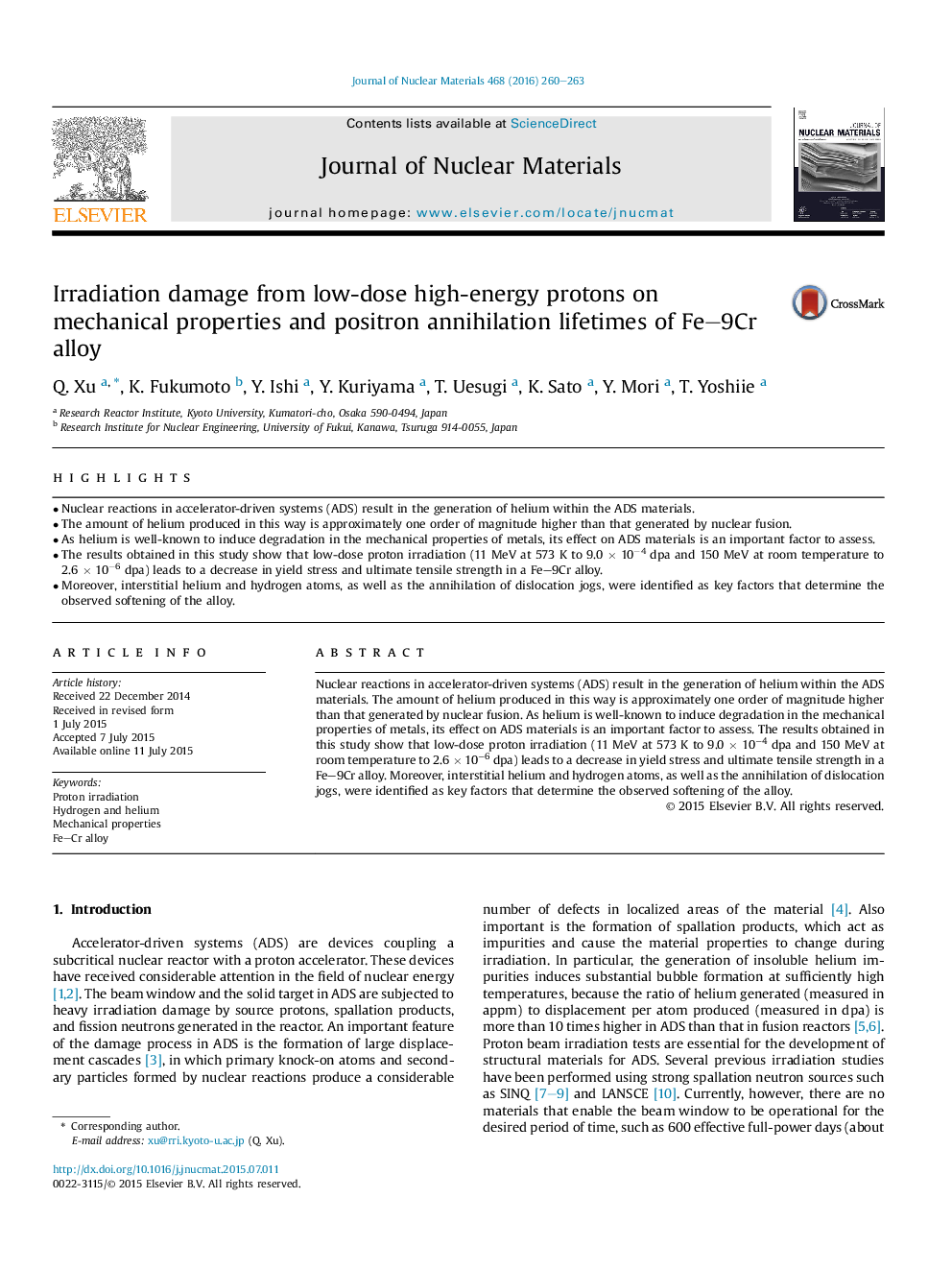| Article ID | Journal | Published Year | Pages | File Type |
|---|---|---|---|---|
| 1564839 | Journal of Nuclear Materials | 2016 | 4 Pages |
•Nuclear reactions in accelerator-driven systems (ADS) result in the generation of helium within the ADS materials.•The amount of helium produced in this way is approximately one order of magnitude higher than that generated by nuclear fusion.•As helium is well-known to induce degradation in the mechanical properties of metals, its effect on ADS materials is an important factor to assess.•The results obtained in this study show that low-dose proton irradiation (11 MeV at 573 K to 9.0 × 10−4 dpa and 150 MeV at room temperature to 2.6 × 10−6 dpa) leads to a decrease in yield stress and ultimate tensile strength in a Fe–9Cr alloy.•Moreover, interstitial helium and hydrogen atoms, as well as the annihilation of dislocation jogs, were identified as key factors that determine the observed softening of the alloy.
Nuclear reactions in accelerator-driven systems (ADS) result in the generation of helium within the ADS materials. The amount of helium produced in this way is approximately one order of magnitude higher than that generated by nuclear fusion. As helium is well-known to induce degradation in the mechanical properties of metals, its effect on ADS materials is an important factor to assess. The results obtained in this study show that low-dose proton irradiation (11 MeV at 573 K to 9.0 × 10−4 dpa and 150 MeV at room temperature to 2.6 × 10−6 dpa) leads to a decrease in yield stress and ultimate tensile strength in a Fe–9Cr alloy. Moreover, interstitial helium and hydrogen atoms, as well as the annihilation of dislocation jogs, were identified as key factors that determine the observed softening of the alloy.
